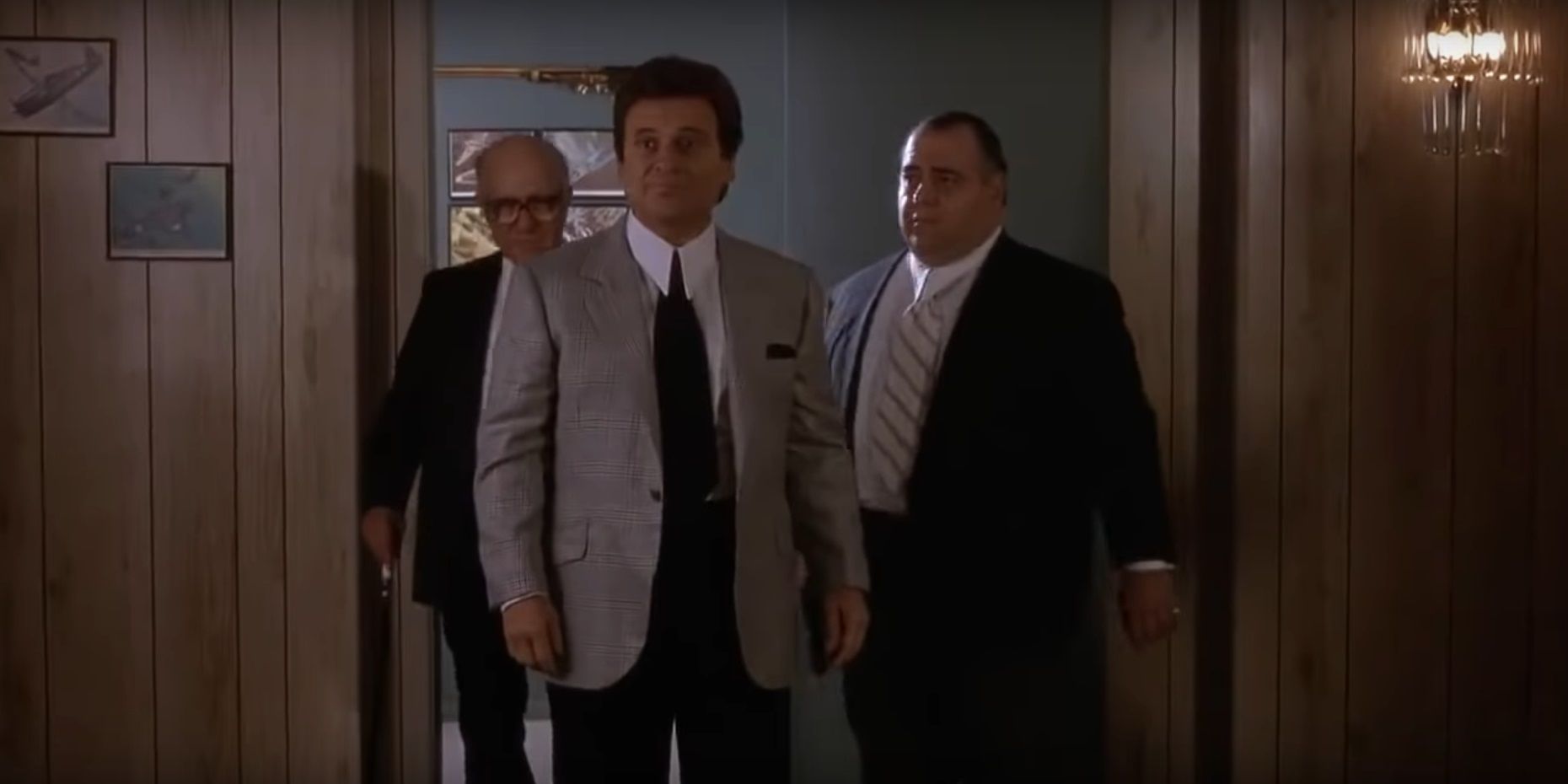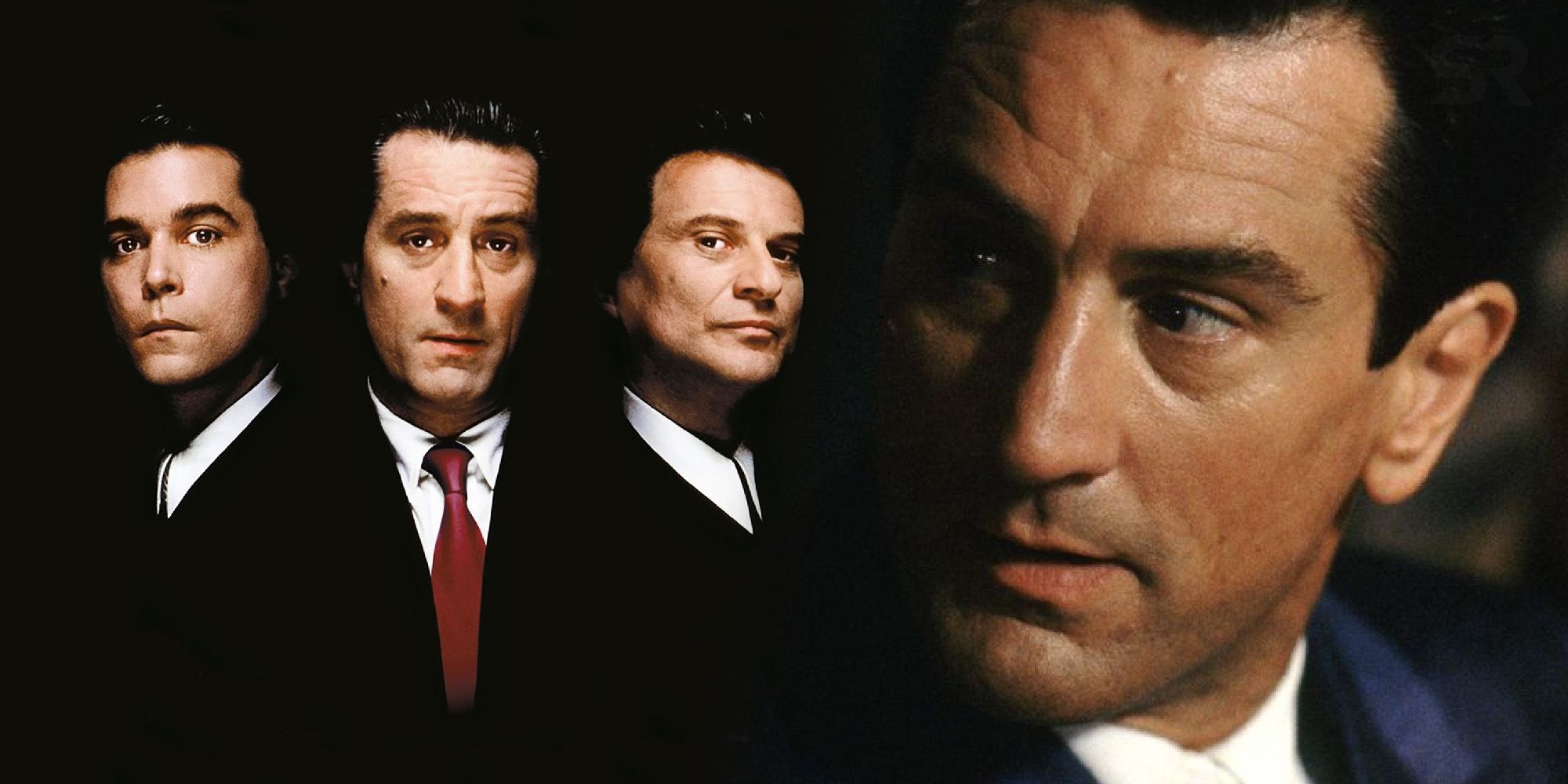Goodfellas: Why Jimmy Conway Escaped Tommy's Fate - The Real Story
Why did Jimmy Conway, the ruthless and calculating gangster portrayed by Robert De Niro in Martin Scorsese's cinematic masterpiece Goodfellas, manage to evade the deadly consequences that befell his volatile associate, Tommy DeVito? The answer is far more complex than a simple matter of luck; it delves into the intricate dynamics of power, loyalty, and the unwritten rules that governed the lives of those entrenched in the Mafia's brutal hierarchy.
The film Goodfellas, a gripping portrayal of the rise and fall of mob associate Henry Hill, introduces us to a world where violence is commonplace and betrayal is a constant threat. Central to the narrative are Jimmy Conway and Tommy DeVito, two charismatic yet dangerous figures who exert a profound influence on Henry's life. Both are involved in numerous criminal activities, including the infamous Lufthansa heist, but their fates diverge dramatically by the film's conclusion. Tommy, played with electrifying intensity by Joe Pesci, is lured to a supposed "making ceremony" and brutally murdered as retribution for the unsanctioned killing of Billy Batts, a "made man." Jimmy, on the other hand, manages to survive, albeit facing the long arm of the law for his involvement in the Lufthansa heist. The question that lingers is: why did Jimmy escape Tommy's violent end?
| Category | Details |
|---|---|
| Character Name | James "Jimmy the Gent" Conway (based on Jimmy Burke) |
| Portrayed By | Robert De Niro |
| Fictional Film | Goodfellas (1990) |
| Inspiration | James "Jimmy the Gent" Burke, Irish-American gangster |
| Criminal Activities | Armed robbery, truck hijacking, murder, extortion, Lufthansa Heist |
| Key Relationships | Henry Hill (associate), Tommy DeVito (associate), Paul Cicero (mentor) |
| Personality Traits | Calculating, ruthless, charismatic, respected, prone to violence when crossed, meticulous planner. |
| Fate | Convicted for his role in the Lufthansa heist. (In real life, Jimmy Burke was also convicted for other murders.) |
| Real-life Counterpart Info | Jimmy Burke on Wikipedia |
One of the primary reasons Tommy was targeted for elimination while Jimmy was spared lies in the crucial distinction of being a "made man." Billy Batts was a member of the Gambino crime family, enjoying the full protection and privileges afforded to inducted members of the Mafia. Tommy, despite his violent tendencies and ambition, was not a "made man," meaning he lacked the official sanction and protection of the Mafia hierarchy. Killing a made man without authorization was a grave offense, punishable by death. Tommy's impulsive decision to murder Batts, fueled by a long-standing personal feud and disrespect, crossed a line that could not be ignored. The Gambino family demanded retribution for the death of one of their own, and Tommy, being an outsider, was an easy target.
Jimmy, on the other hand, was not Italian. In real life, Jimmy Burke was Irish-American. While he wielded considerable power and influence within his circle, his lack of Italian heritage prevented him from ever becoming a made member of the Mafia. Ironically, this status might have inadvertently saved him. While killing Billy Batts was a serious offense, the repercussions for killing Jimmy, a non-Italian, may not have been as severe or as immediately enforced. The Mafia was primarily concerned with protecting its own, and the murder of an outsider, even one deeply involved in criminal activities, might not have triggered the same level of urgency for revenge.
Another crucial factor in Jimmy's survival was his reputation and value within the criminal organization. Jimmy Conway was known as a meticulous planner and a highly skilled thief. He was the mastermind behind numerous successful heists, including the Lufthansa heist, which netted millions of dollars. His ability to generate substantial income for the organization made him a valuable asset. While his involvement in the Batts murder would have undoubtedly strained his relationship with the Mafia, his financial contributions and organizational skills likely bought him some degree of leniency, at least temporarily. The Mafia, like any other organization, weighed the costs and benefits of its actions. Eliminating Jimmy would have meant losing a valuable earner and a skilled criminal strategist.
Tommy DeVito, while undeniably dangerous and capable of extreme violence, was also perceived as reckless and unpredictable. His volatile temper and disregard for authority often created problems for the organization. The murder of Billy Batts was a prime example of his impulsiveness and lack of judgment. While Tommy was a useful enforcer, his instability made him a liability. The Mafia, in its cold and calculating manner, likely viewed Tommy as more trouble than he was worth. His elimination served as a message to other aspiring gangsters that unauthorized violence would not be tolerated. In essence, Tommy's death was a strategic move to maintain order and control within the organization.
The portrayal of the events surrounding Billy Batts' murder in Goodfellas is a fictionalized account of real-life events. The film condenses timelines and simplifies complex relationships for dramatic effect. While the film strongly suggests that Tommy was solely responsible for Batts' murder, in reality, both Jimmy Burke and Tommy DeSimone (Tommy DeVito's real-life counterpart) were involved. The film also omits the circumstances surrounding how the Gambino family discovered Tommy's involvement. In the film, Paul Cicero (based on Paul Vario) is seen being questioned about Batts' disappearance, but the exact details of how the information reached the Gambinos are left ambiguous.
Furthermore, the film doesn't fully explore the potential implications for Henry Hill. As an accomplice to the murder, Henry was equally culpable. The fact that Henry was not immediately targeted suggests that the Mafia either didn't fully grasp his involvement or that they prioritized Tommy as the primary offender. Henry's later decision to become an informant and testify against his former associates ultimately saved him from further repercussions, but it also made him a marked man for the rest of his life.
The dynamics of loyalty and betrayal also played a significant role in the events depicted in Goodfellas. The film highlights the precarious nature of relationships within the Mafia, where alliances can shift and turn deadly at any moment. While Jimmy and Tommy were close associates, their bond was ultimately based on mutual self-interest. When Tommy crossed the line by killing Billy Batts, Jimmy was forced to make a difficult decision: protect his own interests or stand by his friend. The fact that Jimmy did not intervene to save Tommy suggests that he prioritized his own survival and recognized the futility of challenging the Mafia's authority. In the cutthroat world of organized crime, loyalty is often a luxury that few can afford.
It's also important to note the historical context in which these events took place. The events depicted in Goodfellas occurred during the 1970s, a period of significant upheaval and change in the Mafia. The traditional power structures were being challenged by a new generation of gangsters who were more ambitious and less respectful of the old ways. The Lufthansa heist, which occurred in 1978, represented a turning point in the Mafia's history. The sheer scale of the heist and the subsequent infighting and betrayals exposed the vulnerabilities and weaknesses of the organization. In this chaotic environment, it became increasingly difficult to maintain order and control, and the consequences for disobedience became even more severe.
Ultimately, Jimmy Conway's survival in Goodfellas can be attributed to a combination of factors, including his non-Italian heritage, his value to the organization, and Tommy's recklessness. While Jimmy was undoubtedly a ruthless and dangerous criminal, he was also a pragmatist who understood the rules of the game. He recognized the limits of his power and avoided crossing the lines that could lead to his downfall. Tommy, on the other hand, was a loose cannon who acted impulsively and without regard for the consequences. His actions ultimately sealed his fate and served as a cautionary tale for others who dared to challenge the Mafia's authority. Goodfellas is a fictionalized account, but rooted in reality. It highlights the intricate dynamics of power, loyalty, and betrayal that defined the lives of those entrenched in the brutal world of organized crime, it also highlights that sometimes survival is purely down to luck.
While the film focuses on Tommy DeSimone's death as retribution for Billy Batts' murder, in reality, there are theories that Tommy was also killed because he had an affair with the wife of a powerful mob boss. This would add another layer of complexity to the question of why Jimmy Conway wasn't targeted, as he was involved in numerous other crimes. It's also worth remembering Henry Hill's narration: from his perspective, Jimmy Conway was a legend, and the narrative is filtered through that lens. Perhaps the narrative protects Jimmy in a way that reflects Henry's admiration, even fear, of him.
The real Jimmy Burke, on whom Jimmy Conway is based, was eventually convicted of murder unrelated to the Lufthansa heist or the Billy Batts killing. He died in prison. This underscores that while he avoided immediate retribution for some actions, justice, or at least consequences, eventually caught up with him. It's important to remember that Goodfellas is a compelling story but a dramatization of complex real-life events. While it offers insights into the world of organized crime, it doesn't always present a completely accurate or nuanced portrayal of the individuals involved. The mystery of why Jimmy Conway wasn't "whacked like Tommy" remains a point of debate, but the confluence of factors his perceived value, his non-Italian status, and the volatile nature of Tommy's actions likely all contributed to his survival, at least for a time.

The Goodfellas Diner Where Jimmy Finds Out Tommy Was Whacked YouTube

Goodfellas 15 Most Iconic Scenes, Ranked

Goodfellas Why Jimmy Conway Was Nicknamed "The Gent"